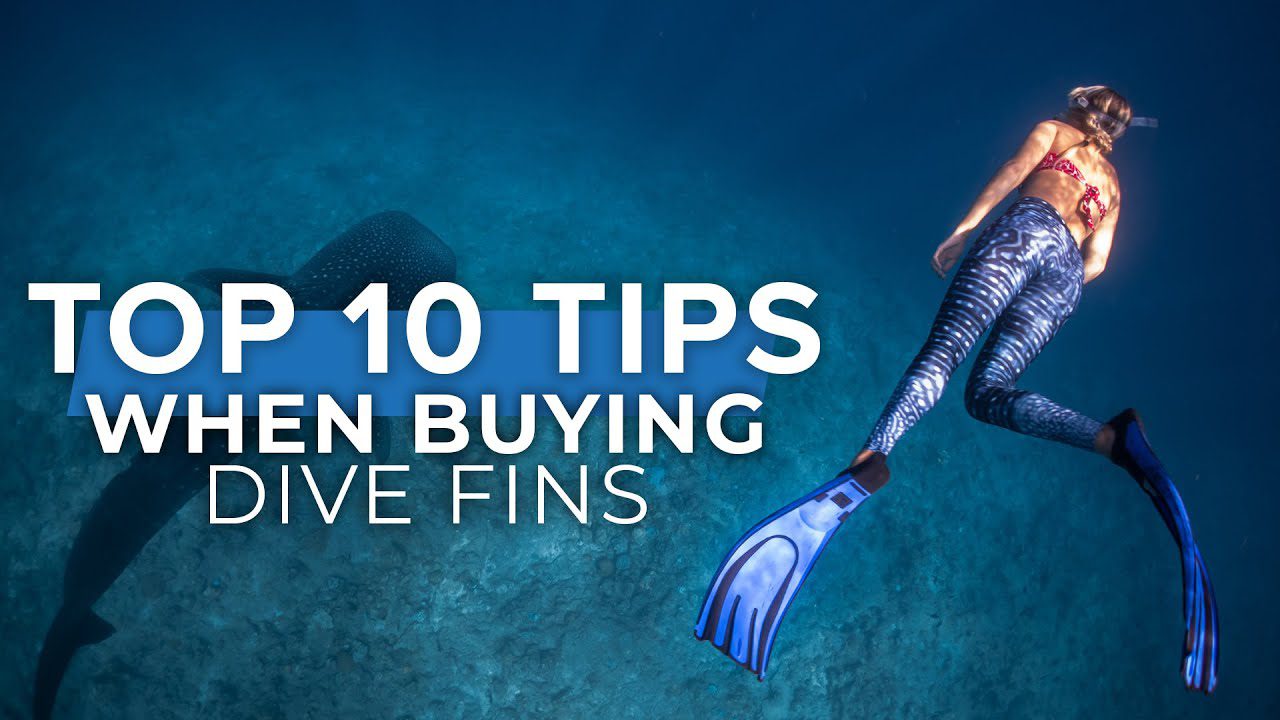Hi everybody, welcome to scuba diver magazine, helping you choose your next pair of fins. There are plenty of fin designs out there and you’ll get a different answer from everybody as to which pair of fins is the best. So, it’s best that you know what you’re looking for when it comes to buying a pair of fins and what they’re designed for so you’re a bit more savvy when you walk into the dive centre and know what to ask for.
Fin Foot pocket
The first thing to consider, which almost halves your search is which foot pocket you need. There are two basic styles of foot pockets, and they pretty much denote what that fin is made for. The most basic is called a full foot. You have a full rubber shoe-sock that you wear barefoot, or sometimes with neoprene socks. Full foot fins are typically smaller, lighter, and cheaper. However, they are typically weaker for it and meant for either snorkelling or easy dives. They may lack the power to fight currents.
Open heel fins are typically bigger, stronger and more expensive and are made for all types of dives. You need to wear boots and you’ll find a heel strap on the back to hold your foot in place. The way that these are constructed makes them stronger and the power comes from more of you leg so you’re less likely to get cramp. They’re also essential for cold water diving as you won’t be barefoot in cold water for long. Just be sure to bring your boots with you when you’re trying on fins.
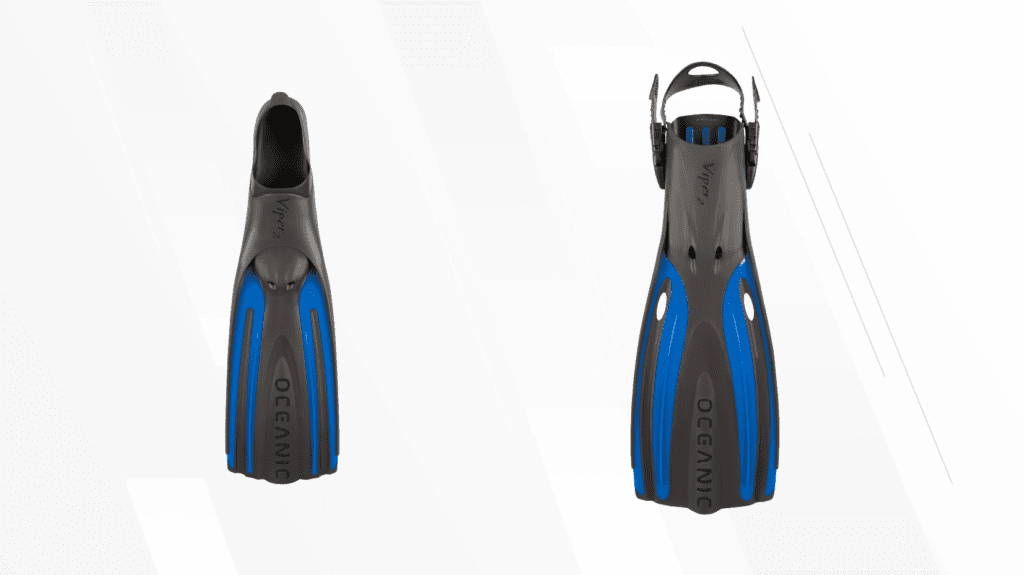
If you’re snorkelling, travelling light, or just doing some easy dives then full foot fins are fine. But, for scuba diving, most divers choose open heel fins. There are a handful of new snorkelling fins that blur the lines a bit. They do have open heels and heel straps but, they’re made to be worn bare foot. The adjustable heel strap just lets you adjust the fit better than a full foot. You can normally see the difference as they’re far shorter.
Blade
Now we get to the technical part of fins. The most basic blade design is called a paddle. They do the job but, there’s no finesse, and power to effort ratio is going to be rubbish. One of the more popular styles is channel. Channel fins use multiple materials, some stiff some flexible, to change the shape of the blade during the kick cycle to change the shape of the blade to scoop and channel water more efficiently. These are popular and strong all-rounders.
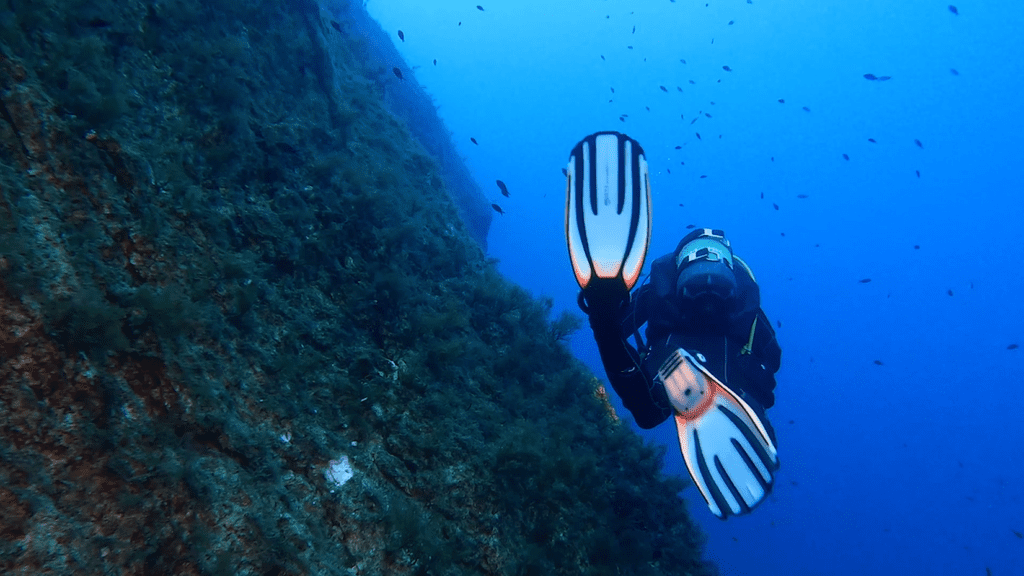
Another popular design is called vented. Right in front of your toes is a dead spot where a lot of drag can form and waste energy. So, you’ll often see holes or vents to allow water to flow through them for efficiency. They typically have chunky rails, a wider blade and shorter also. Which makes them better for confined spaces, packing, and again, they’re strong all-rounders.
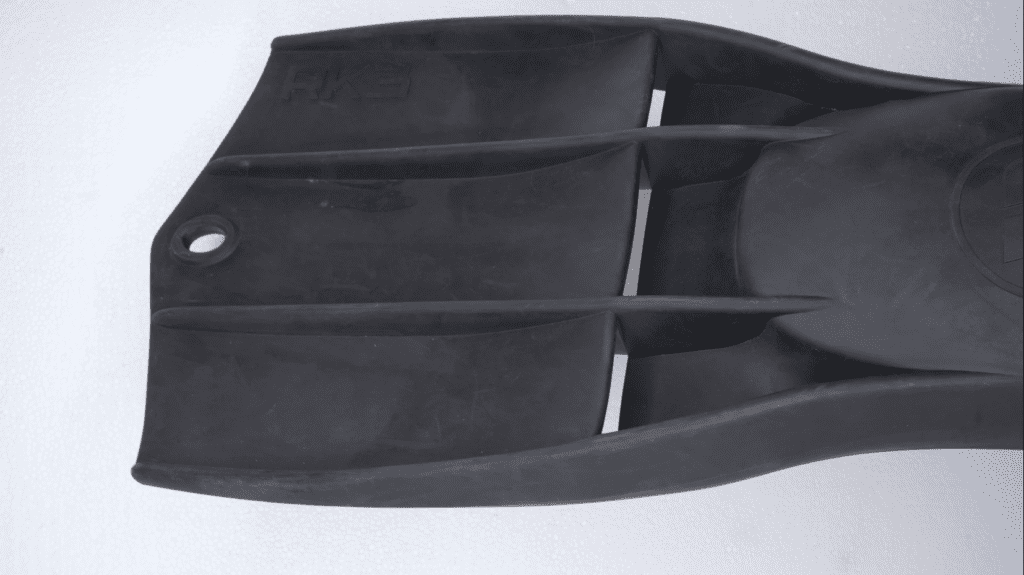
Now, we get into the more exotic designs. Hinged fins let the blade pivot on the foot pocket which make the fin feel a bit floppy. But, it makes the blade hit the most effective angle of attack during every part of the fin kick. Very efficient for straight line speed and conventional kick styles. They can get a little confused for some fine tune movement and the hinge is an obvious weak spot. As long as you use them properly, they’re a good choice.
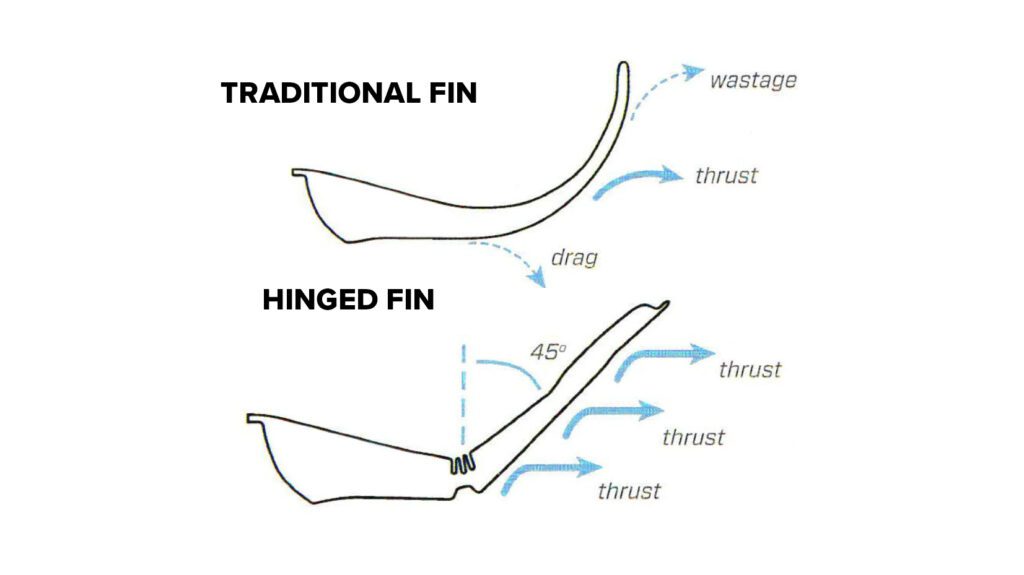
Split fins will divide opinions, they use a mechanism inspired by marine mammals, where there is a split down the centre of the fins and the two halves rotate on the outer rails to create a vortex in the centre. Surprisingly efficient but, similar to hinged fins that they can get confused with some fin kick styles.
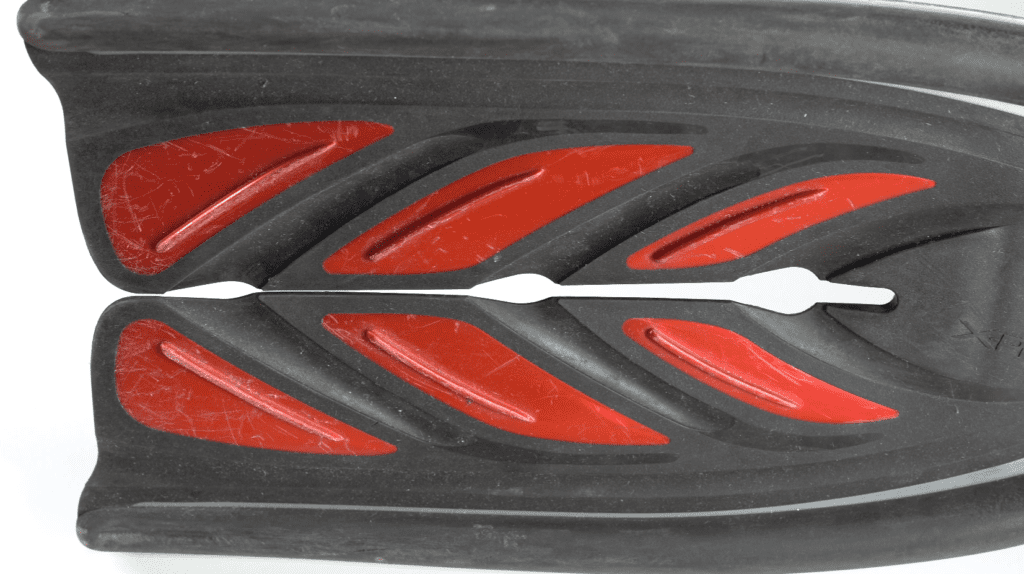
Fin Tip
The tip of a fin can have some clever features that aren’t always explained. The actual shape can have some benefits. A fish tail tip is inspired by the shape of fish fins and help to reduce tracking. It prevents your fins from shuddering from side to side as they move through the water.
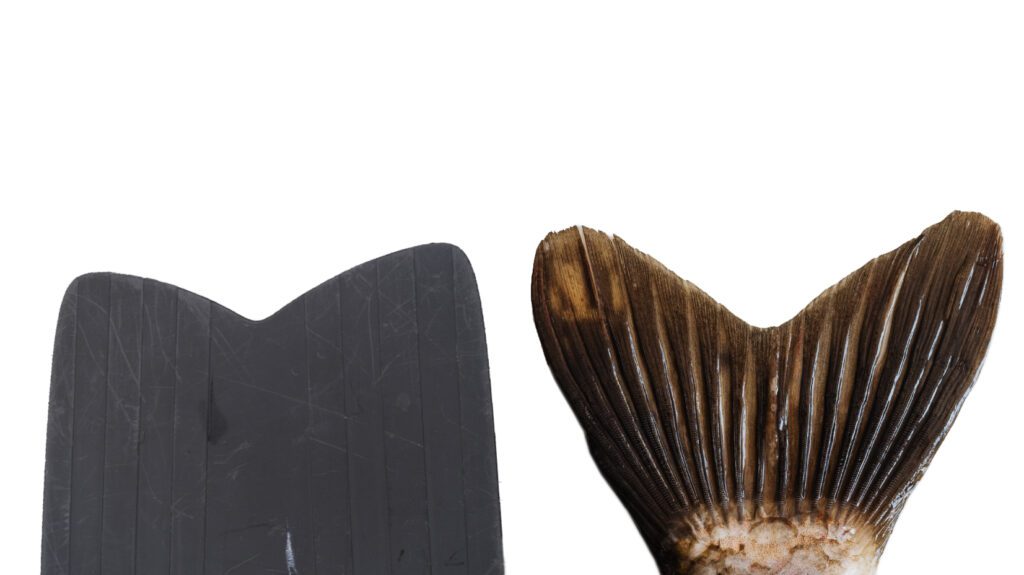
You’ll also often see chunky rails down the side of fins and these little notches sticking out of the blade towards the tip and these are to help channel water in the right direction so that it doesn’t spill over the sides and also help prevent tracking.
Angle
I’ve spoken about the angle of attack. And, if you point your toes and feet as flat as possible, your ankle doesn’t bend a perfect 180 degrees. So, some fin designs will have the foot pocket and then a bend so that the blade angles downwards. This increases efficiency so, it’s a nice feature to see on a pair of fins. In the water it’s great however, outside of the water they can be annoying.
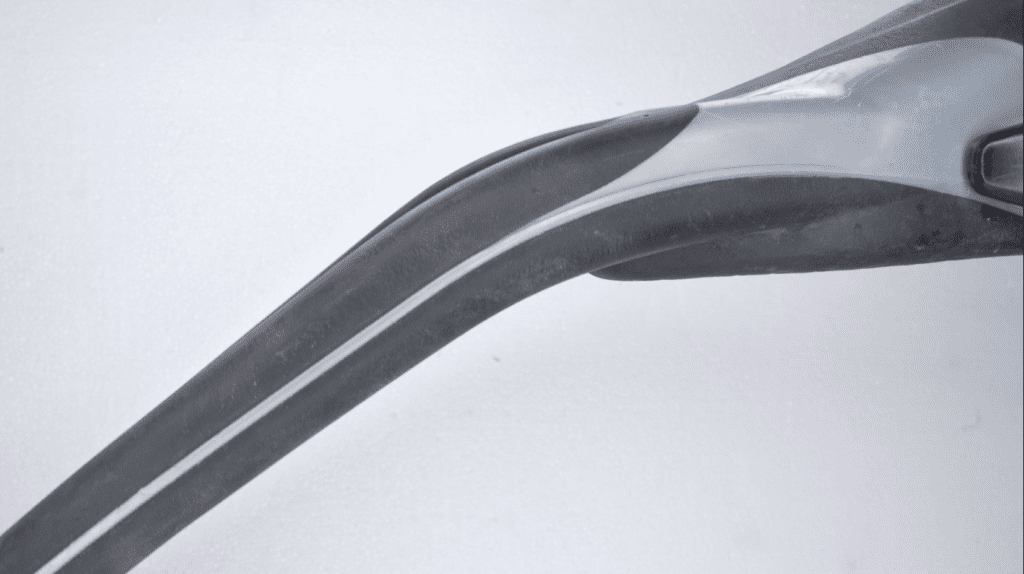
First of all, just packing them in a bag. Bags don’t tend to have those angles, which can lead to wasted space or bending your fins a bit which isn’t great. On the deck of a boat or shuffling into the surf, you’ll be bending the tip of your fins upwards and more likely to stub them on something and trip over. Some angled blades are designed so that they start higher up the foot pocket for the best of both worlds.
Size
The actual size you need is very important. Full foot fins, you want them snug but not tight but, not lose neither. Try them on, lift them off the ground and give them a wiggle. They shouldn’t shift on your foot. If they do they may rub and hurt your foot. If they’re a little big you can always wear a pair of socks to pad them out. Too small and they’ll cut off blood flow. It’s best to go for the larger size and pad them out than struggle with fins that are too small.
Open heel fins, the size charts are typically drawn up if you’re wearing 5mm soft soled boots. If you wear something different, you may need to take that into account. Pop the fin on and the top of the foot pocket should reach about here on your foot. If it doesn’t reach there then after the dive you’ll find it hard to get the fin off. Your boot will compress at depth, squeeze further into the foot pocket and then expand as you ascend, now you can’t get your fins off.
There shouldn’t be very much wiggle room neither, your boot should feel firm in place and the fin move with your foot with the fin strap snug.
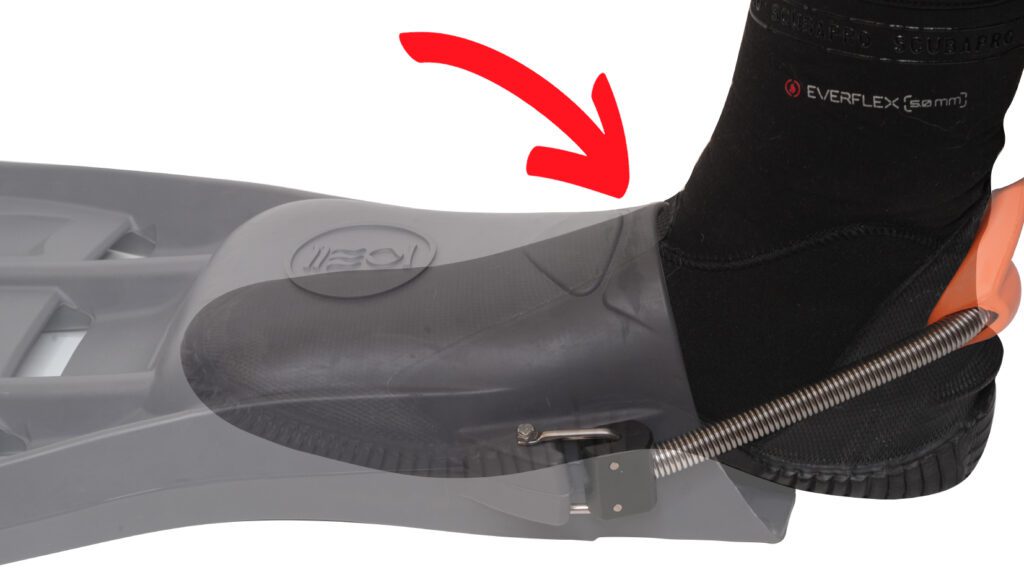
Heel strap
Three styles of fin strap on open heel fins; rubber ratchet, bungee and spring. Rubber ratchet straps are the most simple and cheapest. They typically have a ratchet buckle on both side similar to your mask. Pull on the tab and it tightens the strap. The downside to these are you need to reset them between dives.
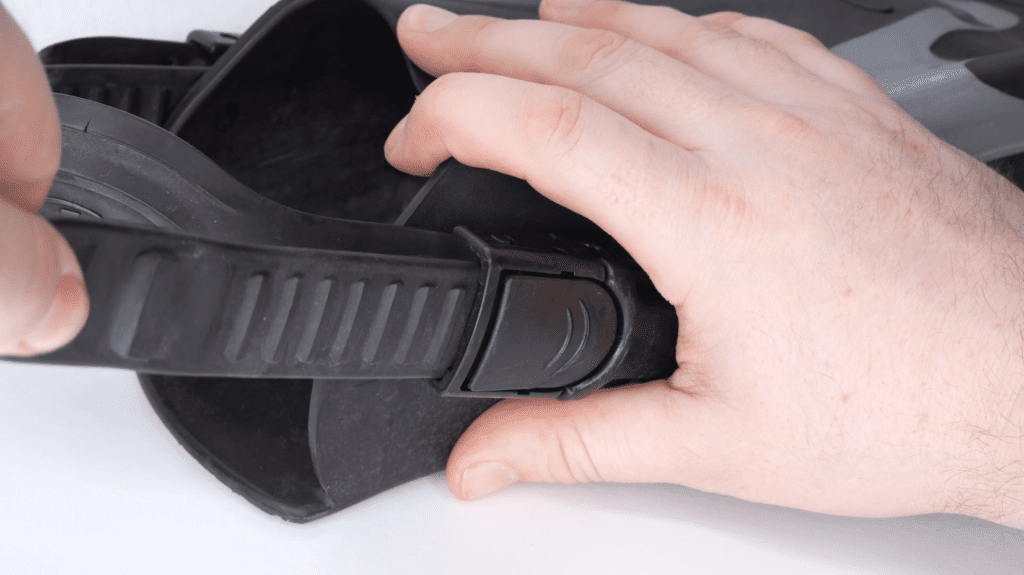
Bungee heel straps use bungees that you normally see on spearguns. So they’re strong and they’re stretchy. This has one huge benefit over the rubber straps in that you just pull them over your heel and the bungee does the rest. They also continue to adjust themselves at depth. When your boot compresses a ratchet strap either needs to be adjusted or it slips off your heel. A bungee will keep snug on your heel all the time.
Spring heels are similar except they’re made from a metal spring. They tend to be stronger against abrasions but they’re typically a set length. Bungees your can often cut them shorter if you want them tighter. But, springs need a buckle design that lets you adjust where the spring is attached to adjust its length.
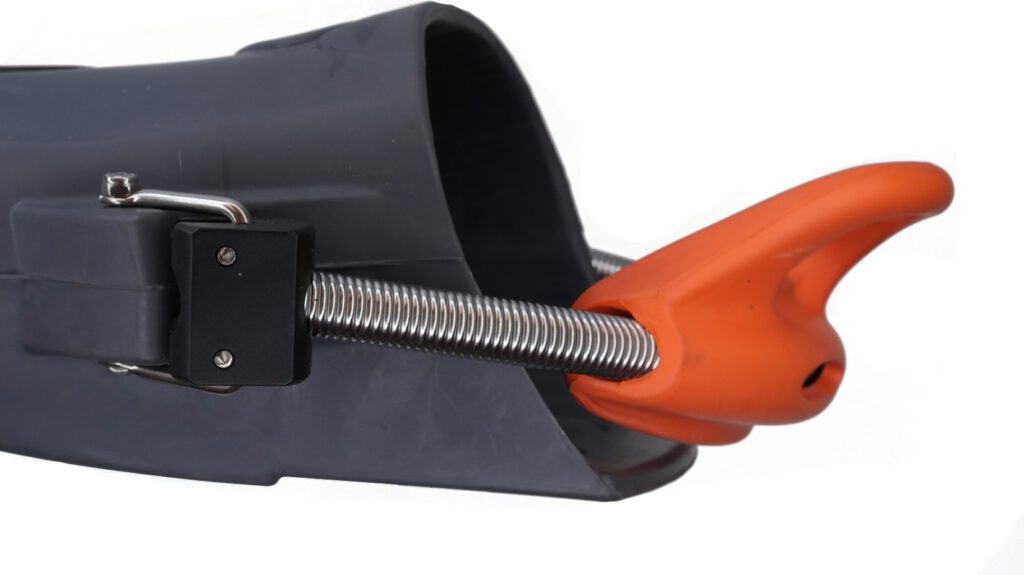
Buoyancy
This one’s tricky because it’s hard to measure the buoyancy of a fin so, the manufacturers rarely test and list the buoyancy of a fin. The buoyancy of a fin can be really useful to know for your trim. You’ll often see some divers describe certain fins as heavy which means that they sink where other fins float.
The buoyancy of a fin is useful to know for a couple of reasons. First the trim. If you find that you have floaty feet, then a pair of heavy fins can help to bring them back down to keep you horizontal in the water. The dry weight of the fin does not equate to the buoyancy. So, search online to see if any divers have worked out the buoyancy of the fins for you.
The second reason is that it’s nice to know if your fins will disappear up or down should you drop one in the water when taking them off. You won’t have long to go after it so, it can be nice to know which way it’s likely to go.
Colour
The colour of your fins is mainly cosmetic but, should still be a part of your decision making process. Most diving fins will come in basic black. Which is a good colour, it goes with everything, it doesn’t fade and doesn’t show when they’re dirty. But, if everybody has black fins, you blend in and they’re harder to see in poor vis and low light.
Your fin colour can really help you stand out in the water. At a glance, one piece of equipment that stands out from behind are a diver’s fins. If you have a distinctive colour fins then other divers are going to be able to pick you out of a crowd easier. Brighter colours are also easier to spot from a distance. Remember that red will disappear in shallow water and just appear brown so think about whites, yellows and oranges for bright colours.
Stiffness
This is relatively new for the scuba market. Freediving fins have had a range of blade stiffness ratings for a while. And now we’re seeing that on scuba fins also. Most fins out there would be classified as a medium stiffness. A good all-rounder, the Goldilocks; not too stiff, not too soft.
Stiff fins are made from a more dense material with power in mind. They’re less compromising and are built for pure power. The drawback is that you need the legs for it. You’re using muscles in your legs that you don’t use to walk so you can tire sooner and feel knackered after a dive. They’re good for training though, to train those finning muscles.
Soft fins are for endurance. You may not be as fast in the water but, you’ll be able to wear them all day. It’s only on a select few fin designs that you get a choice of stiffness so, don’t worry too much about what stiffness a fin is if it doesn’t mention it in the description, it’s going to be a medium.
Special Features
Some fins have party tricks. Right now on of the most popular is modular blades. You can separate the foot pocket from the blade. It’s mainly for travelling. If you’re trying to travel as light as possible and want your gear to fit in a backpack, most fins are going to stick out of the top. But, if you can effectively cut them in half and put them back together so that they now fit in your bag much more easily. Some you can just buy the foot pocket so you can swap between full foot and open heel or two different sizes if you’re using a drysuit then back to thin boots.
Some fins have hook points at the tip or heel which are hand to hang your fins up or at least secure your fins once you’ve taken them off, it’s just one less thing to hold onto getting out of the water. Recycled materials, some fins can hinge up so that you can walk around in them easily, a new one can fold down flat there are fins that do all sorts of clever things nowadays. Most fins will have drainage holes and venting rails in the foot pocket to help you get them off without suction but, some fins have unique clever features.
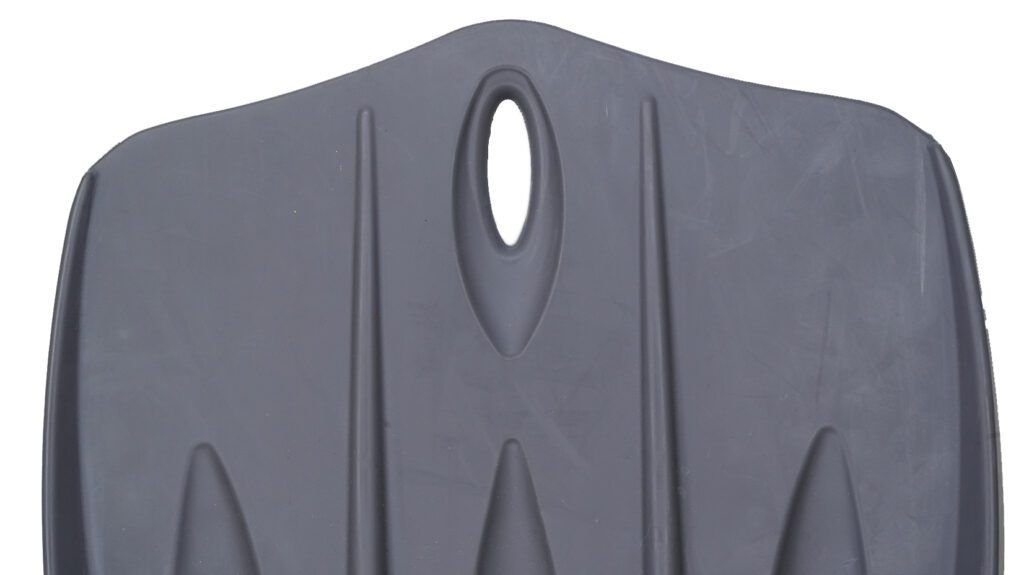
You can always ask your dive centre if they have any recommendations, just be aware that they may have some bias to sell you some fins that they need to sell through so, don’t be afraid to lead them in the direction you want, they should give an honest opinion on what you’re looking at. And online you have all the choice available, you just can’t try them on first and return postage can be painful.
